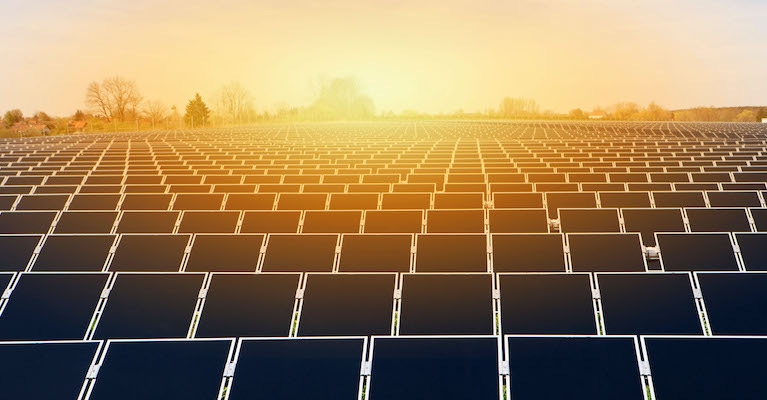Clean energy provisions in the reconciliation bill could boost solar installations by 66 percent over the next 10 years.
March 16, 2022

A third of all utility-scale solar capacity scheduled for completion in the fourth quarter of 2021 was delayed by at least a quarter and 13 percent of solar energy capacity slated for completion in 2022 has either been delayed by a year or more or canceled outright, according to the report released by the Solar Energy Industries Association (SEIA) and consulting and research firm Wood Mackenzie. In 2021, US solar prices increased as much as 18 percent due to unprecedented supply chain challenges, trade actions, and legislative uncertainty, according to the U.S. Solar Market Insight 2021 Year in Review report.
Over the last 6 months, Wood Mackenzie has decreased near-term solar forecasts by 11 gigawatts (GW), or 19 percent, due in large part to continued supply chain constraints, price increases, and interconnection challenges. None of this is good news in the effort to reduce greenhouse gas (GHG) emissions.
“In the face of global supply uncertainty, we must ramp up clean energy production and eliminate our reliance on hostile nations for our energy needs,” said SEIA CEO and president Abigail Ross Hopper in a SEIA news release. “Policymakers have the answers right in front of them: if we pass a long-term extension of the solar Investment Tax Credit (ITC) and invest in U.S. manufacturing, solar installations will increase by 66% over the next decade, and our nation will be safer because of it. America’s energy independence relies on our ability to deploy solar, and the opportunity before us has never been more obvious or urgent.”
According to the news release, if the manufacturing tax credits move forward, the industry could unlock nearly 20 GW of new domestic solar manufacturing capacity. Under an ITC extension scenario, 10-year forecasts for the residential, non-residential (commercial and community solar), and utility-scale solar sectors would increase by 20%, 15%, and 86%, respectively. Solar capacity additions by 2030 would exceed 70 GW annually under this scenario.
Without policy action in Congress, Wood Mackenzie projects that U.S. solar capacity would only reach 39% of what’s needed to hit President Biden’s 2035 decarbonization target.
Key Takeaways
Solar accounted for 3.9% of total U.S. electricity generation in 2021
Residential solar installations totaled 4.2 GW in 2021, a 30% year-over-year growth.
Community solar volumes reached 957 MW, representing 7% year-over-year growth, while commercial solar volumes in 2021 were nearly equal to 2020 at 1,435 MW. Project delays from interconnection challenges and supply chain constraints limited growth in both sectors
17 GW of utility-scale capacity were installed in 2021, about 3 GW less than expected due to supply chain constraints, logistics challenges, and trade headwinds. In Q4 alone, more than a third of all capacity expected to come online was delayed to 2022 or later
Year-over-year price increases for utility-scale solar reached 18% for fixed-tilt projects and 14.2% for single-axis tracking projects in Q4
Nevertheless, demand for solar remains high. In 2021, the residential market saw 30% year-over-year growth with over 500,000 U.S. homeowners installing solar, helping the industry reach 23.6 GW of new installed solar capacity.
The supply chain constraints of the last year will hit 2022 installations the hardest, reducing capacity by 7% compared to 2021,” said Michelle Davis, principal analyst at Wood Mackenzie and lead author of the report. “But our forecasts demonstrate long-term growth will overshadow these short-term challenges, especially if federal clean energy incentives are passed. In our ITC extension scenario, installed solar capacity is expected to multiply six times by 2032.”
But the sunny outlook might not last— the residential solar market could slow as policymakers in California and Florida consider new programs that would reduce compensation in their net metering programs. Wood Mackenzie said that If the net metering proposal moves forward, the California residential solar market is expected to be cut in half by 2024.
Kevin Clemens is a Senior Editor with Battery Technology.
About the Author(s)
You May Also Like




